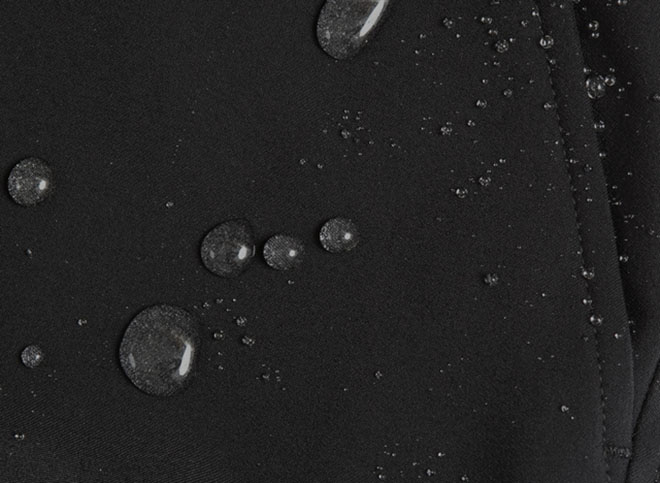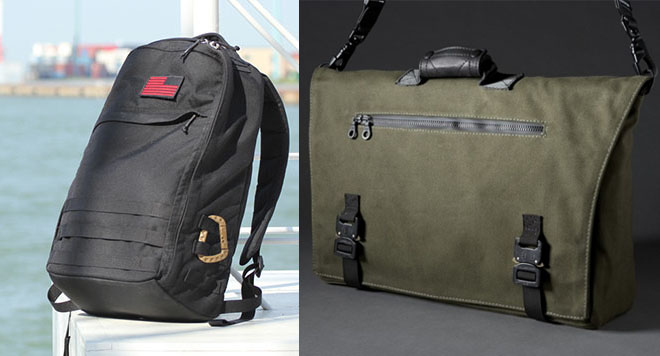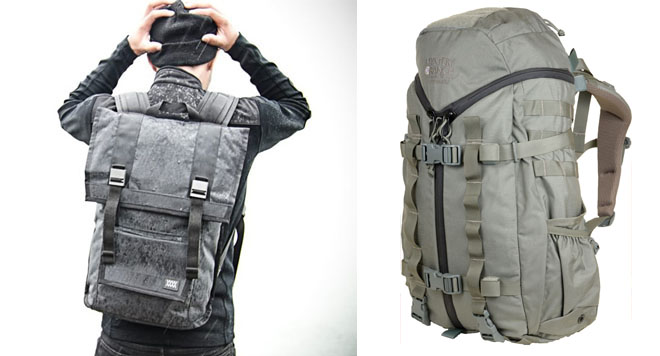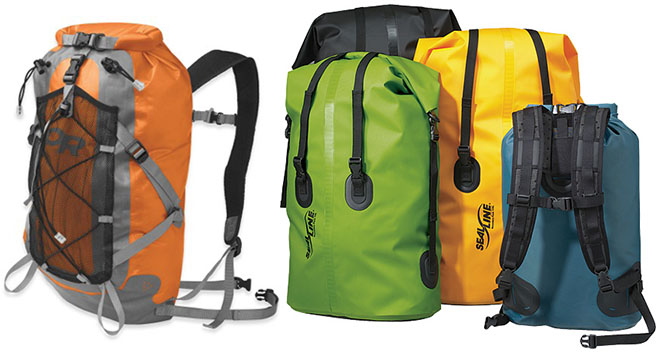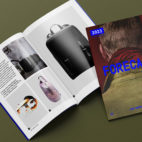The Waterproof / Water-Resistant Everyday Reference Guide
So what do we make of our previous Waterproof vs Water Resistant write up? Us folks here at Carryology, along with the assistance of my pal Scott over at Black Rainbow Project, were brainstorming a way to make some sense out of this Waterproof vs Water Resistant discussion. In fact, what we did was create a reference guide for future posts and general discussion. A way to quickly and easily determine the level of water resistance of a bag, pack, and/or carry product.
The Waterproof / Water-Resistant Everyday Reference Guide.
Before we dive in, a quick word. We’re not scientists. We’re Carryologists. This is by no means a scientific guide. Some scientific waterproof tests are; IP Code (Ingress Protection Rating), GORE-TEX’s in-house quality management process, Water Resistant mark testing (for wristwatches),and Rain Room tests, among several others. The issue with these tests are, like any third party controlled tests usually run by Swiss scientists and engineers in a fancy high-tech laboratory, is that they’re very expensive. Many, if not all, of our favorite smaller carry brands (and even the larger brands) could never afford to have their products tested in these fancy facilities… especially since if they simply tweak one bit of construction for a new seasonal collection, forcing them to completely retest (and there are no discounted fees in this case), along with separate tests for any new products they release. This is very, very expensive.
The goal we set out to achieve here was an everyday reference guide, for us mere mortals. A way to classify products quickly and simply, based on our own first-hand experience using the product, some shared second-hand experiences using the product, reviews we’ve researched, materials and construction techniques used, the manufacturer’s claims, and/or our decades of shared professional experience in this niche field to form our own opinions. The point here is not to be absolutely scientifically correct, or create exacting standards, because that is impossible without utilizing the tests mentioned above. This is just a starting point, an everyday guide, which is a work in progress. You may see these terms start popping up in our future posts and/or discussions. Here are the three levels we’ve worked up…
–
1. Water Resistant (WR1)
More than likely you’re going to get caught up in the rain at some point. When you do get caught in a heavy downpour, know that the fabrics/zippers/construction used in the creation of this product did not have 100% waterproofness in mind, hence, earning the rating of WR1, Water Resistant. Standing in a light drizzle or medium rain fall, or a sprint to cover under heavy rain fall, or even a spilled liter of water on the surface of the fabric, and the contents of your stuff will still likely be completely fine. Drops may bead up on the surface of the fabric at first (like they’re supposed to), but eventually the moisture will soak through. Toss on a sil-nylon rain cover, and you’ll be right as rain (pun intended).
This is NOT a bad thing, as the the large majority of you will easily find cover, or use a rain fly. Don’t be a weirdo standing in the center of a rainstorm while people are looking at you from 4 feet away under an awning, taking photos of you with their iPads. Even most bad ass military tactical and hiking backpacks are simply water resistant, and that is totally fine. (We’re thinking about maybe adding a WR1+ designation, where the product doesn’t completely fall into the 2nd category, but where major steps have been made to make it more water resistant than products in the WR1 category… we’ll see what happens)
Materials under this category can be, but are not limited to; Polyester, Nylon, Waxed cotton, Military Canvas, Wool, etc, most of which will have some sort of backing or impregnation/treatment added.
Brands under this category are, but are not limited to; BLACKHAWK!, Osprey, Triple Aught Design, GORUCK, Killspencer, etc.
–
2. Everyday Water Proof (EDWP2)
Significant sections of the bags are waterproof under daily circumstances (and even beyond that). This is a very high level of waterproof, but not the definition of 100% waterproof. If you get caught in a relentless level 27 torrential downpour for 10 hours, your gear will be bone dry. Not a drop will enter. You can feel confident in this level of waterproofness as you bicycle through the city, jogging/walking through thick waves of rain, or even whitewater rafting. However, when fully submerged for a period of time, water will find its way in (usually via the needle holes or through the main compartment access point). Water pressure has a way of finding its way in, while air finds its way out. But, these products could probably take a solid 60 seconds of complete submerging before letting water in. And how often will you literally go underwater with your bag? Probably never. So basically… no SCUBA diving. Otherwise, you’re all good with EDWP2.
Materials under this category can be, but are not limited to; Tarpaulin (aka “truck tarp” or “billboard tarp”), Dimension Polyant X-Pac fabric, Vinyl, GoreTex, Polyester or Nylon with backing and with a Tarpaulin floating inner liner (like plenty of messenger bags utilize, as one general example). Sometimes you will also see waterproof and/or water resistant zippers used here. And it will often only be the main section or a significant part of the pack that is EDWP2. If a few pockets are only velcroed shut, just don’t put your phone in them.
Brands under this category are, but are not limited to; Mission Workshop, Black Rainbow Project, Mystery Ranch, Arcteryx, etc.
–
3. 100% Whitewater-proof (WP3)
These will be very expensive and most of you don’t need them. They are designed for tackling extreme rivers single-handedly, with most of the journey upside down under mountains of water, without a single drop of water entering the interior. Fight off JAWS by hand in the pounding ocean waves as your tiny boat is sinking next to you, while keeping your cigars nice and dry in order to celebrate your survival victory, as you then you use the massive Great White Shark carcass as a raft to get to shore. This is the highest level and pretty much unnecessary for most people. But we won’t knock you if you love your WP3 level drybag backpack, all walks of life and carry are welcome here.
Materials under this category can be, but are not limited to; Tarpaulin, Vinyl, and a bunch of crazy sounding poly materials that are extruded rather than woven. 99.99% of these materials will be synthetic (I leave a .01% chance that someone is out there making an all natural option). These packs will use ultrasonic welding and seam taping. All these materials and manufacturing processes used in their creation are pricey.
Brands under this category are, but are not limited to; SealLine, Sea To Summit, NRS, Outdoor Research, etc.
–
We’d love to hear your rainstorm stories nightmares and your overall feedback on this one. As always, thanks for reading.





 Carry Awards
Carry Awards Insights
Insights Liking
Liking Projects
Projects Interviews
Interviews
